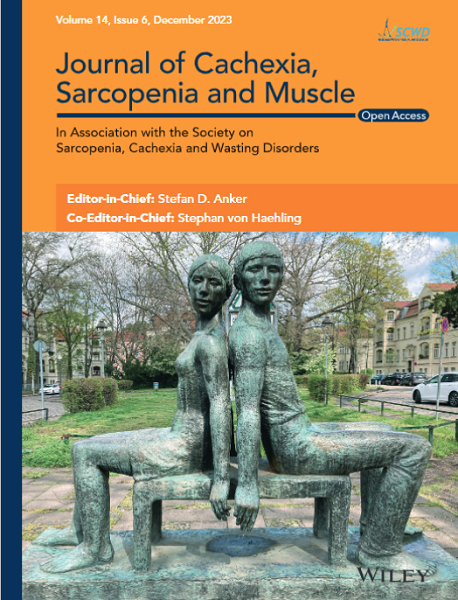Descriptive Epidemiology and Prognostic Significance of Diaphragm Thickness in the General Population: The Nagahama Study
Abstract
Background
Diaphragm thickness is a potential marker of sarcopenia in addition to muscle mass and strength at extremities. We aimed to clarify the descriptive epidemiology and prognostic significance of diaphragm thickness in the general population.
Methods
The study participants were 3324 community residents (mean age: 61.4 ± 12.8 years) who participated in a longitudinal cohort study. Clinical parameters were obtained during the follow-up survey of the study population. Diaphragm thickness was measured from B-mode ultrasound images obtained in a supine position. Clinical and physical factors independently associated with diaphragm thickness were assessed by a linear regression model and a causal mediation analysis. All-cause mortality was determined by reviewing residential registry records. Prognostic significance of diaphragm thickness for all-cause mortality was examined using a Cox proportional hazard model analysis.
Results
Diaphragm thickness was greater in men than women (end-expiration, β = 0.161, p < 0.001; end-inspiration, β = 0.156, p < 0.001) and associated with waist circumference (end-expiration, β = 0.259, p < 0.001; end-inspiration, β = 0.128, p < 0.001). Handgrip strength, smoking habit, insulin resistance and exercise habit were not associated with diaphragm thickness. Skeletal muscle mass index showed apparent association with diaphragm thickness, though this association was not observed after adjusting for waist circumference. Over a mean follow-up of 1686 days (15 358 person-years), there were 56 cases of all-cause mortality. Weak handgrip strength (hazard ratio = 0.95, p = 0.044) and low forced vital capacity (hazard ratio = 0.57, p = 0.045) were associated with all-cause mortality, though none of the diaphragm thickness parameters showed a significant association (thickness at end-expiration, p = 0.722; thickness at end-inspiration, p = 0.277; thickening fraction, p = 0.219).
Conclusions
Waist circumference but not parameters of sarcopenia was independently associated with diaphragm thickness. Diaphragm thickness was not associated with all-cause mortality. Diaphragm thickness may not be a marker of systemic sarcopenia.


 求助内容:
求助内容: 应助结果提醒方式:
应助结果提醒方式:


